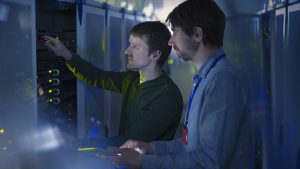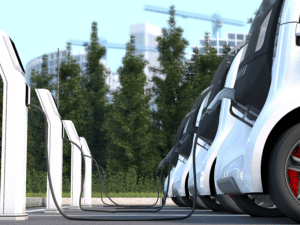A new set of trends is emerging in commercial real estate. The real estate market has been experiencing growth over the last several years, and rents in most urban areas have increased as well. It’s not surprising that tenants want to squeeze the maximum efficiency out of the spaces they occupy -all the while creating a work environment that will make their HR recruiters swoon!
So here are some trends to watch…
The Human Experience: As millennials become a dominant segment of the workforce, they have expectations of a more modern, livable workspace. Commercial real estate developers are creating properties with more open space, recreational areas, and other spaces to enable more collaboration between workers, better occupant health and safety and productivity. According to JLL’s international research “both employers and employees see the human experience as the main factor in determining the shape of their work environment for the foreseeable future.”
According to Deloitte, this new human experience with real estate will be shaped by technologies that augment productivity such as Artificial Intelligence, Robotics and Cognitive Automation.
The human experience can be enhanced with smart building technology to improve comfort, make spaces smarter and more interactive, and by allowing easy access to buildings by their occupants. A safe, secure and comfortable workplace is foundational to the human experience in buildings.
Increasingly, we are seeing customers leveraging the tremendous amounts of data that are captured through IoT-connected devices and digitally-enabled software platforms. These platforms, such as Schneider Electric’s Workplace Advisor and App Studio, expose this information to users through mobile applications for building occupants and dashboards for building managers. Building data is increasingly being used to indicate space availability to building occupants, thus enhancing their experience in the building. For building managers, this means better use of space and a more productive workforce.
Sustainable Development: Much like millennials are driving the move toward an improved human experience in the workplace, culture has shifted toward a more ‘green’ ethos- with property developers, tenants and employees all seeking out sustainable options. While this trend is driven by higher awareness of climate change and the need for everyone to do their part, it also makes business sense. In an article by Principal Global in late 2017, they stated that “it is a growing belief among investors that good sustainability performance is a proxy for good investment management and raises awareness on what is material in commercial real estate.”
In recent years, banking and financial services clients were the flagship tenants in commercial real estate. Due to changing regulations and consumer and investor expectations, the banks demanded sustainable properties to enhance their public image and their bottom line. Today, while financial services continue to dominate commercial real estate, internet giants and technology vendors are filling many of the spaces in modern office buildings, and they have similar expectations. For this reason, real estate investors are seeking to meet sustainable building certification and reporting requirements as well as demonstrate effective governance.
Schneider Electric supports sustainable development with Green Premium products, intelligent building controls and EcoStruxure energy and sustainability services to help clients achieve LEED, BREEAM, GRESB, CDP and other science based targets.
The human experience with commercial real estate is becoming more important as millennials assert their influence on employers.
Operational Flexibility: With lessons learned from previous market downturns, commercial real estate investors and tenants are seeking operational flexibility. New buildings must have the capability to change as tenants come and go and to accommodate different working styles and company cultures. Building owners are seeking to maximize net operating income (NOI) by enabling smart building efficiency to attract and retain tenants.
Some experts say that 75% of the buildings needed in 2050 already exist, therefore developers are competing for the few prime plots of land available for construction. Re-purposing buildings will be a necessity going forward, so build managers will look toward partners who can help enhance their asset value and building performance throughout the building lifecycle by leveraging connected products, software and digital services.
Products like Schneider Electric’s smart panels, controllers, metering, and edge control software for building energy and power management (BMS + EPMS) lay the foundation for the smart building. Apps, analytics and services further enhance performance through IoT, AI and other decision-support tools such as HVAC optimization, asset management, and power analytics.
Schneider Electric is at the forefront of the trends in modern commercial real estate with solutions to help developers build and enhance their properties, help owners efficiently operate, and help enhance the experience for building occupants. Our solutions help commercial real estate clients build and operate sustainable buildings that deliver high asset valuation, lifecycle flexibility and an enhanced human experience.
For more information about Schneider Electric’s solutions for Commercial Real Estate, visit our building management page.




Conversation
2017 was a notable year in India owing to the number of financial reforms introduced by the government. While 2017 will go down in history for all the right reasons, 2018 will be a model year in its own right. 2018 is expected to see a huge spike in the real estate industry and the effects of it on real estate in India are already visible.
Great to hear Saloni. I think you have given me a topic for me next blog! I’m interested in investigating the spike in the real estate market in India.